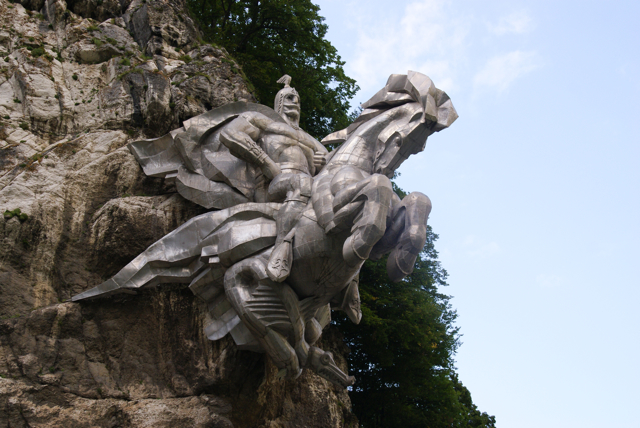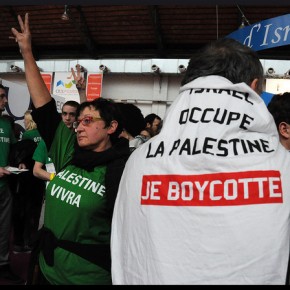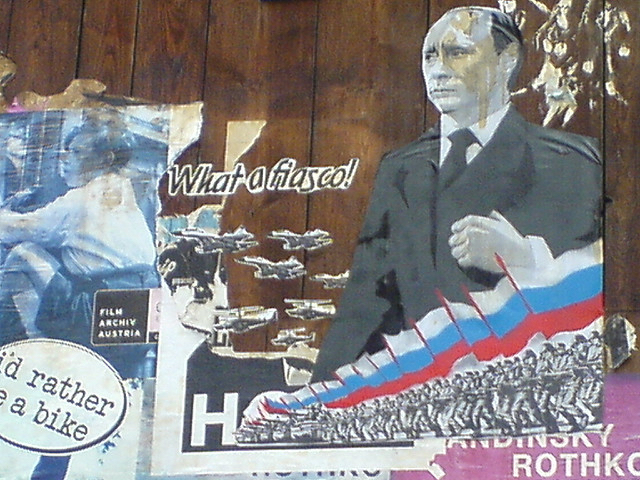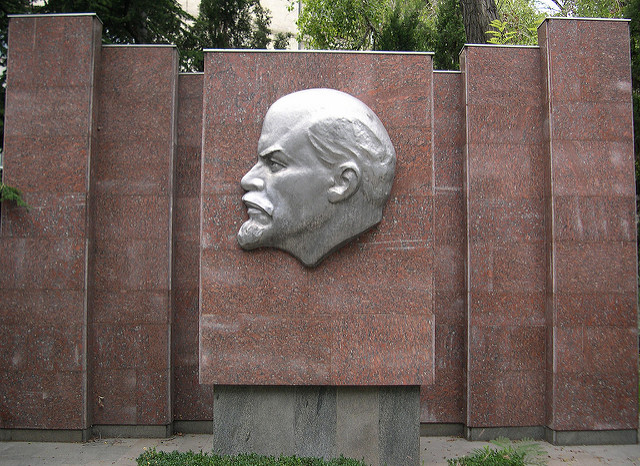The lush Fiagdon Valley in North Ossetia hides the tip of one of the most peculiar icebergs to emerge from post-Soviet Russia. A small medallion portrait of Stalin, solid as granite, clings for dear life to a stunning cliff-face – the work of an Ossetian artist, Daurbek Tsagayev in the late 1970s. The North Ossetian capital of Vladikavkaz has seen a new Stalin monument unveiled as recently as 2009. These are only two examples.
In stark contrast to the proud, ubiquitous Lenin statues that remain an integral component of the skyline of the new Russia’s cities, the verb to describe monuments to Stalin is simply that they lurk. Besides in a handful of industrial ‘Traktorgrads’ of Western Siberian and the Urals, the man of steel stands chiefly amidst the greenery of North Ossetia’s valleys and streams. As personal architect of a particularly brutal and swift industrialisation, why of all places should Stalin’s commemoration be strongest in agrarian, war-torn and impoverished North Ossetia?
The Ossetians were a people destined for a troubled history. A wedge of historically pro-Russian, Orthodox Christian territory between the troublesome lands of the Circassians and Chechens, they were Russia’s proxies in a highly unstable and bloody region during Imperial expansion. This situation has arguably continued until the present day, with Russian recognition of Georgia’s breakaway province of South Ossetia in 2008 a key indicator of the political support offered to the Ossetians by Moscow, on both sides of the Caucasus mountain range. A particularly bloody ethnic war with the neighbouring Ingush people in the early 1990s saw much alleged Russian support to the North Ossetian government, whilst the initial secession of South Ossetia from Georgia in 1991 was an odd mirror image of a similar rebellion during Georgia’s brief independence during the early 1920s, in which Soviet Russia provided tactical support to Ossetian guerrillas.
The Ossetic word for ‘Ossetian’ is ‘Iron‘. It is not without a little irony that after Russia and South Ossetia’s tireless international campaigning for recognition of the South Ossetian government, in 2009 President Eduard Kokoity declared that South Ossetia’s being absorbed into Russia was “inevitable.” Kokoity, with some pressure from the Kremlin, later retracted the statement, but having the gall to make it in the first place showed the strength of the Russian-Ossetian alliance (or, as Kokoity put it, South Ossetia “never left the Russian Empire.”) Loyalty is the watchword for any relationship between Ossetians and Russians, whether under Communism, Imperialism, or Putinism. It is in this vein that the Ossetians make a brave declaration. Stalin – though the meddling Georgians would have you believe otherwise – was an Ossetian!
Gori, historic birthplace of Stalin and home to many of his most devoted admirers lies just outside South Ossetia’s reach. The irony of the Ossetians cracking Georgian myths surrounding the man of steel is even more potent when we see that their claims are not entirely unfounded. Northern Georgia, an ethnic jigsaw perhaps more modest than the North Caucasus but a fragmented one nonetheless was home to Mingrelians, Svans, Ossetians, and Georgians, in a situation far more mixed than is now the case. Dzhugashvili, Stalin’s surname, was simply a Georgianisation of the Ossetian ‘Dzhugayev’. Trotsky was said to have talked of Stalin’s “gross mannered nature… like all those Ossetians living high in the Caucasus mountains.” Memoirs by Red Army General I.V Tyulenev maintain that Stalin had command of the Ossetic language, whilst Anatoly Rybakov wrote that Stalin’s mother was “a domineering woman… a thoroughbred Kartveli [Georgian], whilst his father seemed to be from the South Ossetians who lived in the Gori district of Georgia.”

The Georgian émigré writer Grigol Robakidze had even begun to hint of Stalin’s Ossetian origins as early as 1933, in his novel Chakluli Suli. In Stalin as Revolutionary: 1917-1929, historian Robert C. Tucker included quotes to the effect that the rough and brutal character of Stalin was due to his Ossetian heritage, Ossetian highlanders known for their vendettas and clan warfare. Poet Osip Mandelshtam ended his 1933 poem the ‘Kremlin Highlander’, a comment the brutality of Stalinism with a mention of the bloodied highlander’s “Ossetian torso.”
Stalin’s famous observation that “:Georgians have a strong spirit… we must crush it” is almost certainly not lost on South Ossetians after a bloody and protracted war with those of such strong spirit. Neither, it would seem, on a Georgia keen to turn its back on a troublesome Soviet past. It may therefore not be too surprising in future years if some Georgians were all too happy for their Ossetian foes take the legacy of Stalin off their hands for them. “In the new Georgia” said Simon Sebag Montefiore, “Stalin is no longer Georgian; he’s a Russian emperor”
Ossetia’s fixation on its prodigal son is also lent more credence when seen through the prism of the Second World War. Operation Edelweiß, the German plan to seize the oilfields of Baku and Grozny, was halted in its tracks in Vladikavkaz – the North Ossetian capital – after massive initial success (including raising a Nazi flag on Mount Elbrus, highest peak in the Caucasus.) Stalin’s deportation to Siberia and Kazakhstan of the Ossetians’ traditional enemies, the Chechen and Ingush, could well be another contributing factor to his continuing popularity.
St. George, another hero of Georgians, Russians, and Ossetians alike, leaps from the rock face in a cacophony of twisted metal and martial glory in another monument in North Ossetia’s valleys. Myths unite what these mountains divide. St. George and Stalin – odd bedfellows and odder bedrocks for a national identity. But, perhaps a more fitting testament to the bizarre dispute over one man’s legacy, which lies behind a bloody war meriting a few passing mentions today in Western media. Ossetia’s saving grace could be that, not ending in ‘stan’, the daily struggles of the peoples of the Caucasus may still merit a place in the Western conscience and imagination, grandiose political loyalties aside. Dzhugayev or Dzhugashvili, Stalin was and chose to be the man of steel – a particularly malleable legacy.
These sculptures, busts, and paintings of the man belong in an era of black and white newsreels and cursory glances back into a troubled past, yet they exist in full-spectrum, glorious Technicolor. Shelley’s Ozymandias comes to mind, with its statue of a “shattered visage… from whose wrinkled lip and sneer of cold command, tell that its sculptors well those passions read; which yet survived, stamped on lifeless things, the hand that mocked them and the heart that fed.”
In this region where monuments to the dead outnumber monuments to the living- schools, hospitals and proper housing- seeing this face, one which is so familiar from history books should not be such a disturbance, yet it is. It is an enduring riddle, perhaps one which nobody save the Ossetians and Georgians can ever solve.
Photographs courtesy of the author






Great piece Arkady!
Through the grace of this photography, I have uncovered what is for me the most fiesmo sculpture ever engineered ( “created” cannot apply) – one whose stunning absence of all but triumphal bloodlust leaves me awed. That it is an image of “Saint George” only amplifies the effect.
Cry havoc, and unleash the dogs of war!!